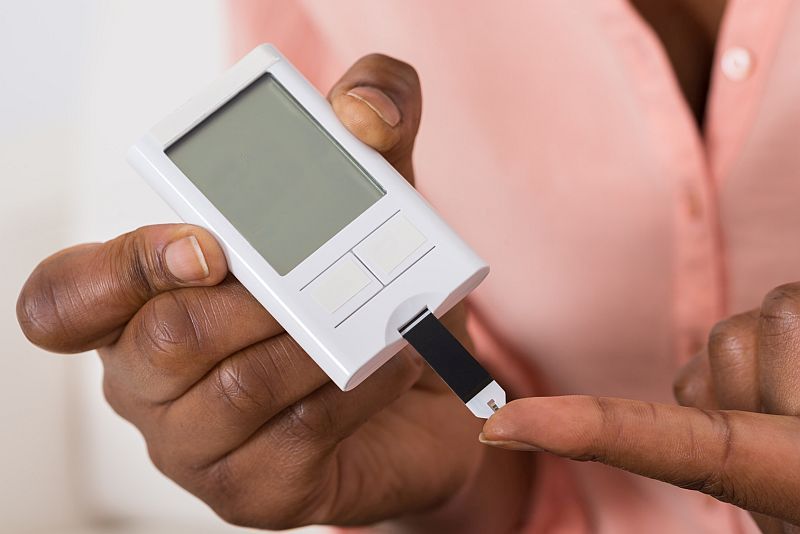Nephrology News


TUESDAY, June 20, 2017 (HealthDay News) -- Millions of Americans with diabetes use glucose meters and test strips to monitor their blood sugar, but affording those supplies can be a challenge.
And that leads some people to use secondhand test strips to save money.
The drug lesinurad in combination with febuxostat was better at lowering blood levels of urate than febuxostat alone in a phase III clinical trial of 324 patients with tophaceous gout. Over 12 months, significantly more patients in the combination group achieved target levels of urate than patients in the febuxostat group.
Gout occurs when urate crystals accumulate in the joints, causing inflammation and intense pain. In some people, large deposits of urate crystals (tophi) form. These deposits can cause chronic joint inflammation and damage. Current guidelines for long-term treatment of gout recommend urate-lowering therapy to maintain a blood urate level below 5.0 mg/dl in patients with tophaceous gout. The recommended first-line urate-lowering therapy is a xanthine oxidase inhibitor, either allopurinol or febuxostat, which inhibits urate production. Many patients are unable to achieve a urate level of <5.0 mg/dl with these drugs, however.
Newswise — Chapel Hill, NC – In a landmark study, UNC School of Medicine researchers have shown that blood glucose testing does not offer a significant advantage in blood sugar control or quality of life for type 2 diabetes patients who are not treated with insulin. The paper, published in JAMA Internal Medicine, details findings from a randomized trial called “The MONITOR Trial.” This study is the first large pragmatic study examining glucose monitoring in the United States.
Type 2 diabetes is an epidemic afflicting one in 11 people in the United States. For those treated with insulin, checking blood sugar with a finger stick at home is an accepted practice for monitoring the effects of insulin therapy. However, the majority of type 2 diabetes patients are not treated with insulin. These patients, too, are often recommended glucose monitoring, despite an ongoing debate about its effectiveness in controlling diabetes or improving how patients feel.
The brain is key in the regulation of appetite, body weight and metabolism. Specifically, there is a small group of hypothalamus neurons, called POMC, that detect and integrate signals that inform on the energy state of the organism and activate the appropriate physiological responses. These neurons are sensitive to fluctuations in nutrients such as glucose, fatty acids and amino acids.
Now, a research project co-chaired by Marc Claret, at the August Pi i Sunyer Biomedical Research Institute -- IDIBAPS, and Antonio Zorzano, at the Institute for Research in Biomedicine (IRB Barcelona), both members of the CIBERDEM network, reveals the connection between POMC neurons at the hypothalamus and the release of insulin by the pancreas and describes new molecular mechanisms involved in this connection. The researchers publish the study in Cell Metabolism and the first authors are Sara Ramírez and Alicia G. Gómez-Valadés, both at IDIBAPS.
New treatment strategies over the last few decades have meant that nowadays 95% of transplanted kidneys function well for at least one year and that the average lifespan of a transplanted organ is between 10 and 15 years. In 1989, one in five kidneys was no longer functional after one year. This is one of the central findings of a review that leading journal "The Lancet" invited Reiner Oberbauer to undertake on the current status of research in this area. "This also underscores the importance of our publications and the fact that MedUni Vienna occupies a leading position in transplantation, even on the international stage," says the Head of MedUni Vienna's Division of Nephrology and Dialysis.
The success of kidney transplant is dependent on the age and sex of both the donor and the recipient, according to research published today in the Journal of the American Society of Nephrology. The study, which was a collaboration between a team from the Research Institute of the McGill University Health Centre (RI-MUHC) and the University of Montreal Hospital Research Center (CRCHUM), revealed that young women had poorer transplant outcomes compared to young men, whereas women of post-menopausal age had similar or slightly better outcomes than men of the same age. This finding opens the door to a new approach for organ transplantation, and could lead to personalized immunosuppression strategies based on age and sex.
The number of Americans affected by chronic kidney disease (CKD) is higher than previously estimated and affects 15% of the U.S. adult population, this according to new data analyzed by the Centers for Disease Control and Prevention (CDC). One in seven American adults, or 30 million people, are estimated to have CKD. However, 96% of those with early kidney disease (stages 1 and 2) don't even know they have CKD. And of those with severely reduced kidney function, (stage 4) but not on dialysis, 48%, are not aware of having the disease.
"30 million Americans are affected by chronic kidney disease and most do not even know they have it. Let these new statistics from CDC serve as a warning bell that a major public health challenge is right in front of our eyes and more must be done to address it," said Kevin Longino, CEO, National Kidney Foundation and a kidney transplant patient. "Additional federal resources must be allocated towards increasing public awareness about the disease and advancing programs targeted towards prevention and early detection. Leaders in the healthcare industry also need to prioritize CKD for the costly, impactful disease that it is - the earlier we can diagnose someone with kidney disease the better their long-term outcomes."
By accepting you will be accessing a service provided by a third-party external to https://galencarepartners.com/


